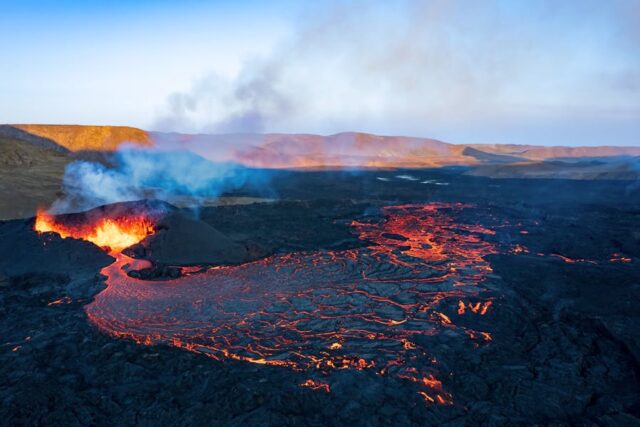When choosing a place to live or retire, safety is as important as affordability or amenities. One of the top concerns for many is, what state has the least natural disasters? From hurricanes and tornadoes to wildfires and earthquakes, natural disasters can destroy homes, disrupt lives, and skyrocket insurance costs.
In this article, we examine which states offer the safest climates for natural disasters. We evaluate the frequency, severity, and historical trends of events like floods, blizzards, and droughts. Whether you’re relocating for peace of mind, investing in property, or just curious about regional risk levels, this guide will give you the necessary insights.
Knowing which state has the fewest natural disasters can help families, retirees, and remote workers make informed decisions about where to settle. It’s not just about avoiding storms—it’s about enjoying a more secure and stable lifestyle.
What state has the least natural disasters?
Based on historical data and FEMA rankings, Michigan is often considered one of the states with the fewest natural disasters. It experiences minimal earthquake risk, no hurricanes, and infrequent wildfires or major floods, making it a top choice for safety-focused relocation.
Why Disaster Risk Should Influence Where You Live
When choosing where to live, people often weigh factors like cost of living, career opportunities, and school quality. However, one essential yet sometimes overlooked consideration is the area’s exposure to natural disasters. With climate events becoming more extreme, understanding which state has the fewest natural disasters can help you avoid major financial setbacks and safeguard your well-being.
High-risk areas often have soaring insurance premiums, a greater risk of property damage, and ongoing safety concerns. On the other hand, states with low disaster frequency provide more financial stability, consistent property values, and peace of mind for homeowners and families.
Michigan is a strong example—it rarely experiences hurricanes, wildfires, or significant seismic activity. This makes it an appealing option for retirees, remote workers, or families seeking safety and a steady lifestyle. Tools like Edulastic—initially designed for educational tracking—can help families assess school resilience and emergency planning in various regions when considering relocation.
Ultimately, evaluating which state has the fewest natural disasters adds strategic value to any long-term living decision. It’s not just about staying safe—it’s about securing a reliable future in a world where environmental threats can no longer be ignored.
What Types of Natural Disasters Affect U.S. States Most?
To understand which state has the fewest natural disasters, it’s essential first to explore the range of natural hazards that impact regions across the United States. Each area has environmental vulnerabilities that affect daily life, insurance rates, and long-term safety.
Earthquakes and Seismic Activity
Seismic events are most common in the western U.S., especially in California and Alaska. These states sit along major fault lines, making them prone to sudden, high-magnitude earthquakes that can cause significant damage to homes and infrastructure.
Hurricanes and Coastal Storms
States along the Atlantic and Gulf coasts, such as Florida, Louisiana, and Texas, frequently endure hurricanes and tropical storms. These events can lead to widespread flooding, property destruction, and mass evacuations, often requiring months or even years of recovery.
Tornadoes and Severe Thunderstorms
Central states like Oklahoma, Kansas, and parts of Texas and Nebraska lie within Tornado Alley. These regions are frequently hit by tornadoes and powerful storms that can devastate entire communities within minutes.
Wildfires
Wildfires have become a growing concern in the western U.S., including states like California, Oregon, and Colorado. Prolonged drought, high temperatures, and dry vegetation contribute to the spread of these fast-moving and destructive fires.
Floods and Flash Floods
Flooding is another common hazard, particularly in low-lying states like Louisiana and West Virginia. Flash floods can occur quickly after heavy rainfall and often overwhelm drainage systems, leading to property damage and safety concerns.
Snowstorms and Blizzards
Northern states experience intense winter weather, but places like Michigan and Vermont typically manage snow and ice more effectively due to strong infrastructure, reducing the risk of large-scale disruption.
States with the Fewest Natural Disasters
If you’re wondering what state has the least natural disasters, several consistently rank as the safest based on FEMA data, historical records, and climate patterns. These states have a notably low frequency of extreme weather events, making them ideal for those seeking long-term safety and stability.
- Michigan: With no exposure to hurricanes and very little earthquake activity, Michigan is often cited as one of the safest states. Wildfires are also rare, and snowfall is well managed through reliable infrastructure.
- Minnesota: While winters are long and cold, Minnesota has a low incidence of natural disasters like hurricanes, wildfires, and major floods. Emergency services and public preparedness are strong statewide.
- Illinois: Tornadoes can occur, but severe events are infrequent and usually limited to the southern part of the state. Flooding is manageable due to solid levee systems and planning.
- Maine: Located far from active fault lines and warm ocean currents, Maine experiences few earthquakes or hurricanes and ranks low in wildfire risk.
- Vermont: Known for its excellent emergency readiness, Vermont experiences mild natural threats overall. Snow is common, but disasters are rare.
- Ohio: Occasionally affected by storms, Ohio still maintains a relatively low frequency of severe natural disasters compared to coastal or southern states.
These states offer strong options for assessing which state has the fewest natural disasters and prioritizing safety in relocation or investment choices.
What to Expect Living in a Low-Disaster-Risk State
Living in a state with a low risk of natural disasters provides a unique sense of security and financial relief. Homeowners in these areas typically pay lower insurance premiums, face fewer threats of property damage, and rarely need to worry about evacuations or rebuilding. With fewer disruptions from extreme weather, life becomes more stable and predictable, allowing you to plan work, travel, and everyday routines confidently.
States like Michigan and Minnesota offer this peace of mind while delivering access to strong infrastructure and quality public services. Schools and healthcare systems often operate without interruption, contributing to a higher overall quality of life. While no state is entirely free from weather-related challenges, the frequency and severity of events in low-risk regions are minimal. Choosing a state with fewer natural disasters can be a life-changing decision for those who prioritize consistency, safety, and mental well-being.
What State Has the Least Natural Disasters — Comparing Regions and Safety Profiles
When determining what state has the least natural disasters, it helps to examine regional trends in weather patterns, emergency response systems, and long-term climate data. Here’s a region-by-region comparison to guide your decision.
- Midwest Safety with Reliable and Stable Conditions: The Midwest offers some of the most disaster-resilient states. Michigan, Minnesota, and Wisconsin experience few earthquakes and no hurricanes. While winters can be intense, these states have strong infrastructure to manage snow and cold effectively.
- Northeastern Calm with Minimal Natural Threats: Maine and Vermont stand out for their limited exposure to major disasters. These states enjoy mild weather overall, apart from manageable winter storms. Residents benefit from low risk and consistent year-round living.
- Western Risk Zones with Higher Disaster Frequency: States like California, Oregon, and Washington may offer natural beauty, but have a higher risk of wildfires and earthquakes. These hazards require ongoing preparedness and can lead to sudden property damage or displacement.
- Southern Vulnerabilities with Hurricane and Flooding Risks: The Gulf Coast states face frequent hurricanes, flash floods, and tropical storms. In particular, Florida, Louisiana, and Texas deal with high storm activity, which can disrupt lives and drive up insurance costs.
- Regional Context Matters in Disaster Planning: Regional context is crucial to assess which state has the fewest natural disasters. Climate stability, infrastructure strength, and historical data are vital in evaluating long-term safety and livability.
Conclusion
Determining what state has the least natural disasters is crucial for anyone prioritizing safety, stability, and lower homeownership costs. While no location is entirely risk-free, states like Michigan, Maine, and Minnesota stand out as consistently safe choices.
These regions offer not just a buffer from nature’s most damaging forces, but also more predictable living conditions and financial peace of mind. If you’re considering relocation or investment, natural disaster history should play a big role in your decision.
The fewer emergencies you face, the more secure your lifestyle becomes—physically, emotionally, and financially.
FAQ’s
What is the safest state from natural disasters?
Michigan is widely considered one of the safest states, with minimal hurricane, wildfire, and earthquake risk.
Are there states without earthquakes or hurricanes?
Yes. States like Michigan, Vermont, and North Dakota have very low exposure to both hurricanes and earthquakes.
Does lower disaster risk mean cheaper insurance?
Typically, yes. States with fewer natural disasters often offer lower premiums and better coverage options.
Can a low-disaster-risk state still face emergencies?
Occasionally, yes. While less frequent, isolated storms or winter weather can still occur but are usually well managed.
Which region of the U.S. is safest overall?
The Midwest and parts of the Northeast generally have the least exposure to major natural disasters.














